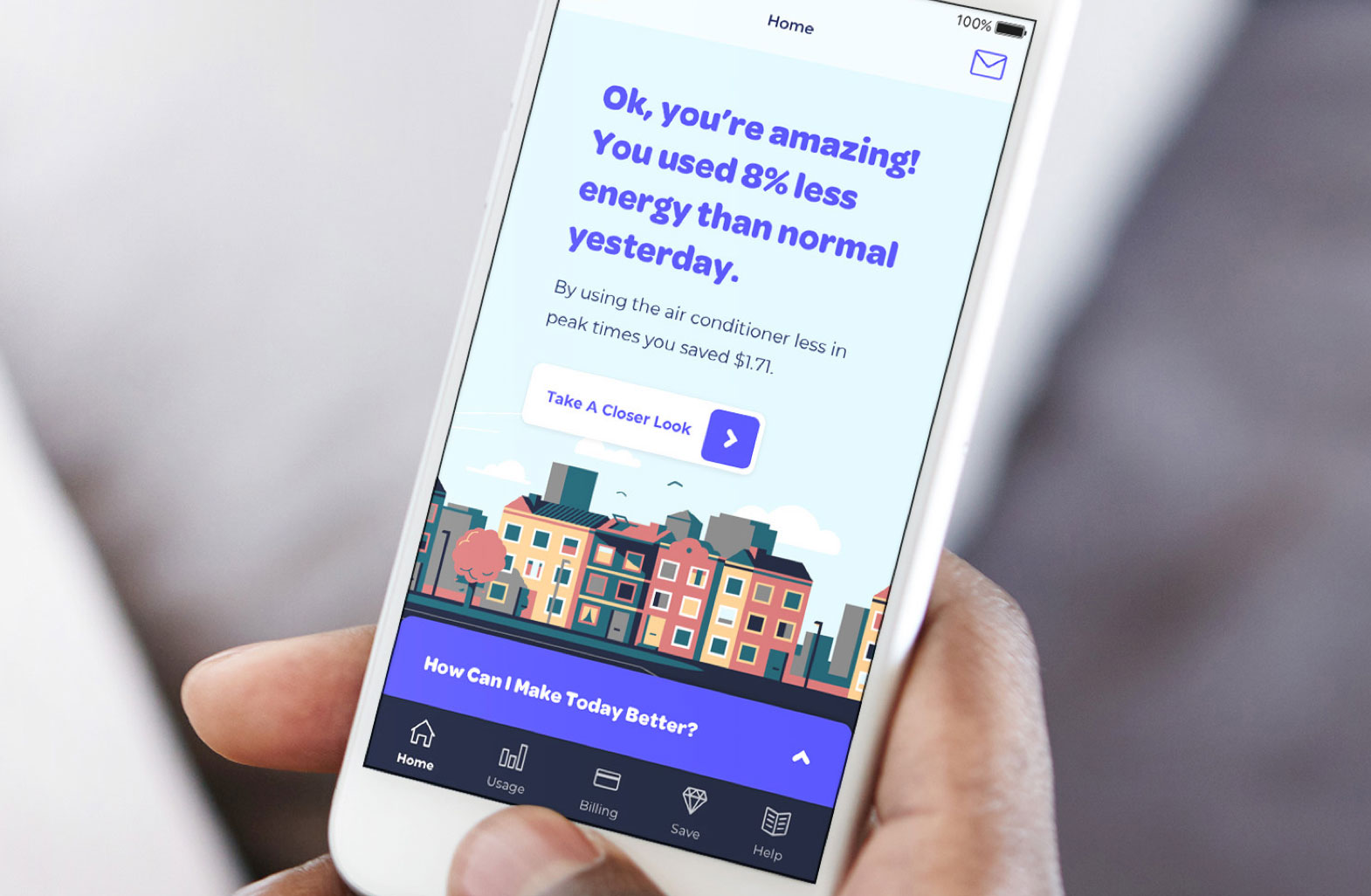What issue can we solve for you?
Type in your prompt above or try one of these suggestions
Suggested Prompt



Energy & Commodities
How Digital Nudges and Rewards Can Cut Carbon Emissions
How Digital Nudges and Rewards Can Cut Carbon Emissions
Pilot projects show that engaging with customers individually to encourage them to shift energy use from peak periods can have big environmental – and financial – benefits.
Retail energy providers have done much to aid the transition that every country must make to clean energy. In the United Kingdom, around 15 percent of households are on green tariffs, and renewables account for almost half the power generated. But they have another major opportunity to accelerate this transition, although this one is much less talked about than renewables.
Research projects by Publicis Sapient and others have shown that if energy providers work with consumers to shift consumption away from peak demand periods – when more expensive and polluting sources are needed to complement cleaner ones – the results can be dramatic.
How we succeeded in shifting peak energy use
A project that Publicis Sapient carried out for Oshawa Power in Canada found that by using a combination of smart meters, dynamic tariffs and customer engagement, up to 10 percent of domestic energy consumption could be shifted from peak periods.
By using a combination of smart meters, dynamic tariffs and customer engagement, up to 10 percent of domestic energy consumption could be shifted from peak periods.
Studies in the United States and Northern Europe have produced similar results – another time-of-use pilot in Gotland, Sweden, reduced peak usage from 23 percent to 20 percent of total load over two years, while a demand response program by Con Ed in Illinois enabled consumers to cut their electricity bills by about 15 percent.
Smoothing energy demand to that extent leads to reduced infrastructure investment, drives down wholesale electricity costs and minimizes the use of dirtier power sources. This brings big reductions in greenhouse gas emissions and huge efficiency savings from reduced balancing costs – the premium on wholesale prices that energy companies pay to balance energy supply and demand, due to the variability of renewable sources.
The financial and environmental benefits are clear. However, in many markets key elements required to deliver large-scale demand-shift programs, including dynamic tariffs and full deployment of smart meters, are not in place.

Opportunity for engagement
This will delay the moment when the full benefits of demand-shift programs can be captured. But for energy retailers, there are other important reasons to consider shifting domestic demand from peak periods.
The key one is the opportunity these initiatives bring to create more active, engaged relationships with customers that can lead to improved retention, reduced cost-to-serve and increased sales of zero-carbon products.
Create more active, engaged relationships with customers that can lead to improved retention, reduced cost-to-serve and increased sales of zero-carbon products.
By engaging with their customers to encourage and enable them to use electricity in a more sustainable way – using alerts and personalized insights on energy efficiency – energy retailers can replace low-engagement relationships based on billing and customer service conversations with a virtuous circle of more frequent and fruitful interactions. For example, research by Bidgely, an artificial intelligence partner for utilities, found that 40 percent of European residential customers would be more likely to stay with their energy retailer if they received proactive energy insights and alerts. Personalized energy insights can achieve open and recall rates above 80 percent, creating ideal conditions for cross-selling.
The power of personalization
The key, therefore, is to focus on the elements of these programs that can deliver measurable results quickly, particularly customer engagement and personalization for those households already using smart meters. Our Oshawa Power pilot project used SMS, push notifications and prompts when customers are looking at their bill on the mobile app to create engagement. Badges, leader boards and personalized messages brought color to each interaction. The results demonstrated the power of this approach: engaging customers digitally via the website, app and cell phone proved far more effective in changing behavior than pricing tools alone. For example, digitally engaged participants in the pilot reduced their electricity consumption twice as much as the average of all participants within their user groups.

Our three-step plan
Drawing on our experience of working with Oshawa Power, we propose an incremental process to encourage demand-shifting. One that starts to deliver tangible change quickly while providing the foundation for the full solution that will ultimately follow:
Step one
Put in place essential digital engagement tools. To ease this process, Publicis Sapient’s Peak Service clusters energy customers based on usage from their smart meter and the characteristics of their home. It then compares them on a daily, weekly and monthly basis so that energy retailers can bring their billing and usage data to life with more precise messaging and can reward households when they make progress. We have chosen leader boards and rewards based on positive feedback in the Oshawa pilot. The aim of the initial step is to demonstrate tangible progress in sustainable usage initiatives quickly and galvanize organizations to go further.
Step two
Deliver measurable shifts in peak demand, retention rates and cross-selling revenue by scaling the digital engagement tools to deliver personalized saving strategies and nudges. At this stage there are no changes to tariff structures or wholesale buying, but the organization needs to decide on the technology stack that will be required; it needs to ensure collaboration between data, engineering, digital and marketing teams to make the initiative an integral part of how the business operates; and it needs to commit to several months of refinement and optimization work around data sources, algorithms, engagement mechanics and content to deliver better insights for customers.
Step three
Pilot and roll out a full-scale solution that combines digital engagement tools with the billing technology to support dynamic tariffs, along with a switch to more frequent wholesale market settlements that take advantage of the dynamic tariffs and minimize risk. The program could be further widened by integrating it with zero-carbon product propositions, especially where these can simplify and automate household decisions on energy use and efficiency.
This complex program of work would historically have been ignited by regulatory intervention or board-level sponsorship. However, with the urgency of energy transition becoming clearer all the time, we believe that it can now also result from momentum built up within the organization, and by showing customers how to use energy more efficiently and contribute to the world’s energy transition.
Related Reading
-
![Ontario Energy Board]()
Ontario Energy Board
How data, gamification and the spirit of competition inspire responsible energy usage.
-
![Energy]()
Energy’s Retail Future: How Innovation Drives Success
Energy retailers face a reshaped landscape, and they must embrace change to define the playing field on which they can compete. There are five things Publicis Sapient recommends energy retailers do to prosper. Read more here.
-
![Barometer]()
Making the Most Out of Mobile
Research shows UK energy suppliers aren’t taking their apps beyond self-serve capabilities or creating seamless customer experiences.








